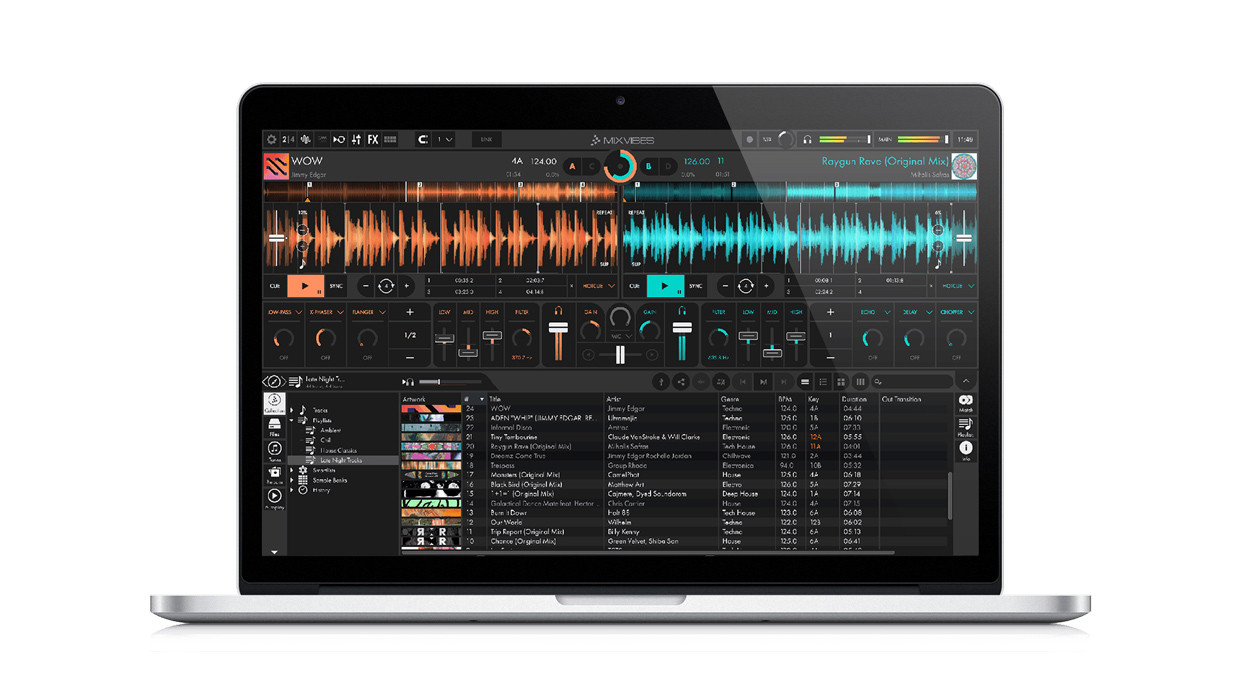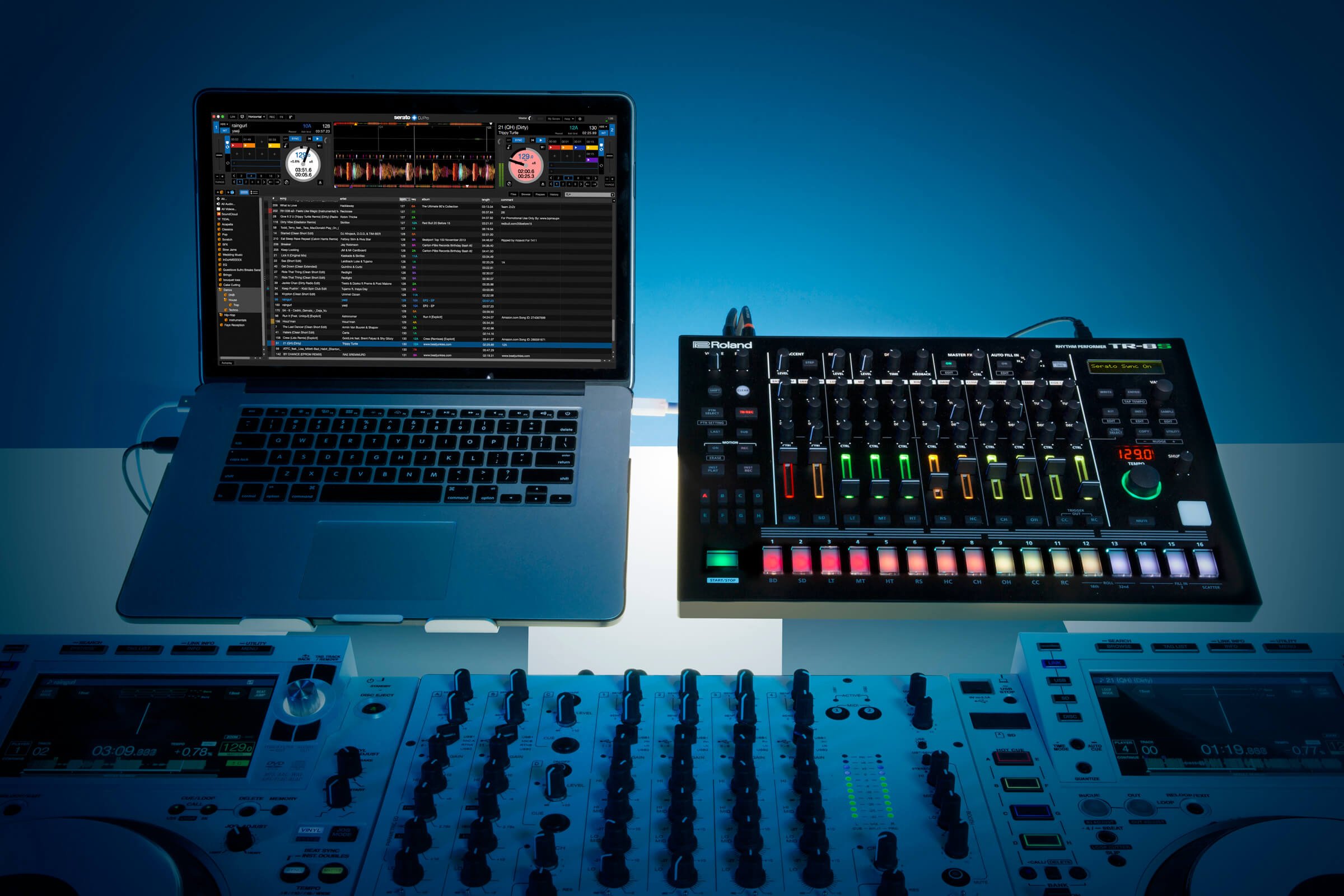

- #Transitions dj laptop how to#
- #Transitions dj laptop full#
- #Transitions dj laptop plus#
- #Transitions dj laptop free#
#Transitions dj laptop full#
The down side is that you’re playing the full six minutes of each track, so your crowd might start to get bored.
#Transitions dj laptop plus#
On the plus side, it’s fairly easy and straightforward. Mixing intros over outros is the simplest mix you can do. If you let “Pressure” play all the way through until the 64-beat outro, and then begin to mix in the 64-beat intro of “Turn It Down,” this is what the waveforms look like: Kaskade featuring Rebecca and Fiona, “Turn It Down” (Deniz Koyu Remix) Camelot key: 4B Nadia Ali, Starkillers, and Alex Kenji, “Pressure” (Alesso Remix) Camelot key: 5A Let’s give it a try with a sample mix using the following tracks: The most basic use of phrasing is to mix the intro of one track over the outro of another track. Even if you’re playing minimal house music, try to play breakdowns with some melody.

#Transitions dj laptop free#
It’s smart to avoid overlaying a beat on the breakdown if you keep this section melodic (and free of sonic textures like white noise, synth washes, bleeps and so on), this gives people room to breathe. Keep in mind that the song’s producers likely had a good idea of when to introduce the breakdown, so try to think about the space between, and don’t eliminate any relaxation elements in the song. If you don’t pay attention to the overall phrasing, you run the risk of your mix sounding awkward and forced. The first verse of your new song should start as the chorus of the outgoing track is ending or fading, so that your mixes feel natural and blend seamlessly together. In general, it’s a good idea to mix out of the chorus so the crowd hears the most familiar part of the song, and then continue your momentum into the next track. You can either wait until there are only 8 or 16 beats left in the phrase of the outgoing track to begin your mix, or you can loop the intro of the track you are bringing in, to give yourself more time to extend the mix. Hip-hop and pop songs often use shorter phrasing, with only an 8-beat or 16-beat intro section. Train your ears to recognize a new phrase, and you’ll know when to start the mix. You should almost always start a new song at the beginning of a phrase in the outgoing track. Again, it’s important to listen carefully and actively to identify the elements of each song you’re mixing. You’ll typically hear a new musical element at the beginning of each phrase. As we mentioned in Chapter 3, understanding phrasing helps you know when to start mixing out of the track you’re playing and into a new one, so your mix sounds seamless.ĭance music is generally produced in groups or phrases of 32 beats.
#Transitions dj laptop how to#
It’s great to know how to beatmatch without the aid of computer software, but phrase-matching is actually a more important DJ skill. Good timing is the magic that keeps people dancing. Whether they’re dropping in a banging percussive break during a peak, or scaling back to a lone four-on-the-floor kick during a valley, they’re always thinking about managing the energy level and rhythmic flow of their set.

The best DJs use rhythm in this way to their advantage. At the peaks, you’re telling your audience when to get excited at the valleys, you’re giving them a chance to breathe. Along those lines, we like to think of rhythm as a landscape with peaks and valleys. Ideally, you want people to groove to your music for as long as possible, but you don’t want to wear them out.

The faster the tempo, presumably, the more emotion and urgency you’re directing at the dance floor.īut rhythm is about more than just beats and tempo. It’s usually measured in beats per minute (BPM) and has a strong effect on how the mood of a particular piece of music comes across. Tempo (Italian for “time”) tells us how fast a piece of music is being played or should be played. Transporting a crowd to dizzy heights and then bringing everyone down for a breather is an essential skill, and it’s all about energy control. When you move from the ambient minimalist soundscapes of techno artists like Richie Hawtin to the banging walls of sound generated by Daft Punk or the Chemical Brothers, it’s important to be aware of the change in mood and atmosphere you’re demanding of your listeners.


 0 kommentar(er)
0 kommentar(er)
